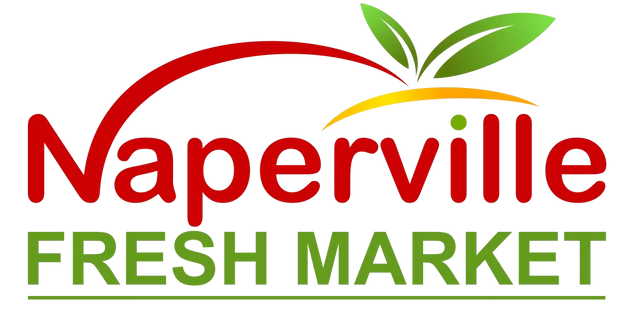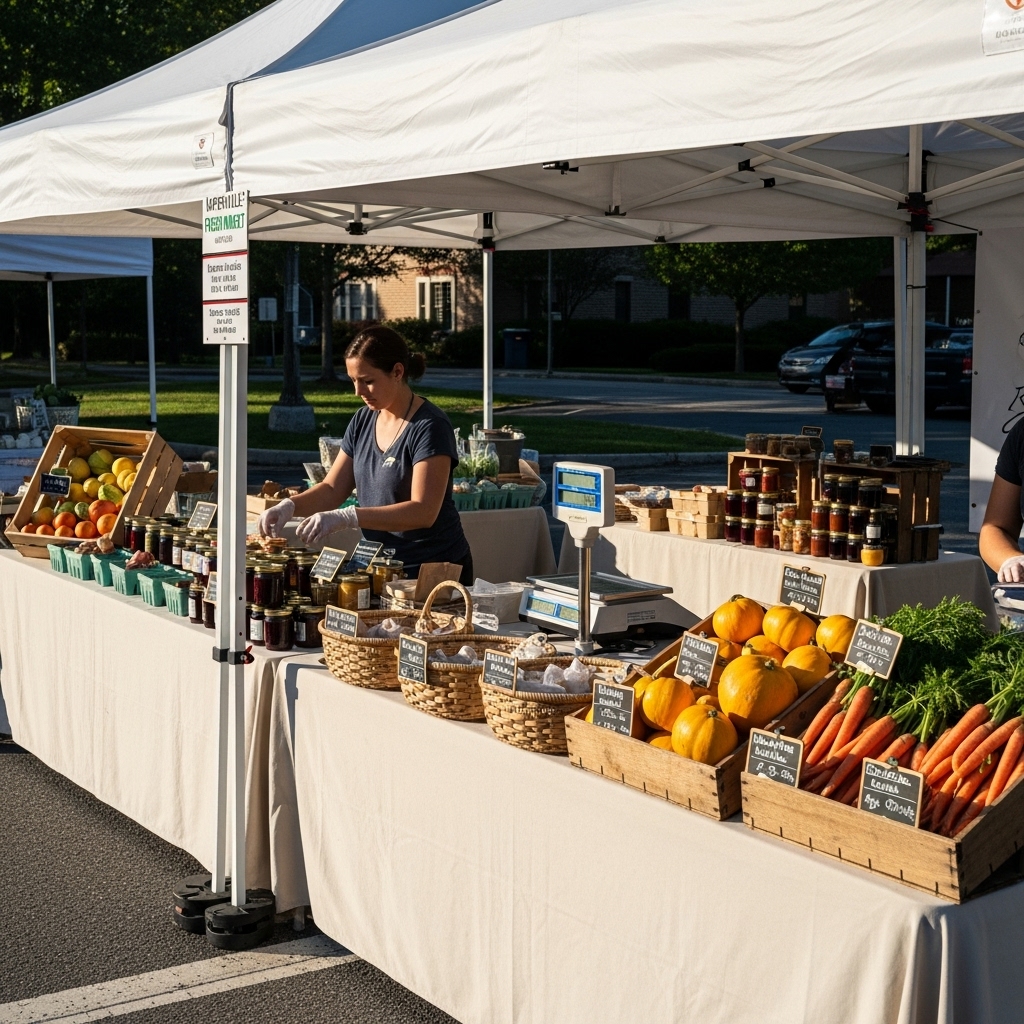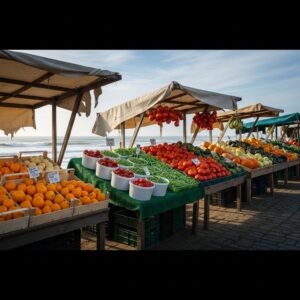Essential Vendor Requirements for Naperville Fresh Market Businesses
Joining the fresh market community in Naperville, Illinois offers businesses a direct line to engaged customers, brand visibility, and invaluable feedback. To succeed, you need a clear grasp of application procedures, compliance rules, and day-of-market expectations. This guide outlines the essentials—from documentation and product labeling to booth setup, food handling, and customer engagement—so you can enter the market with confidence. Before you finalize your seasonal plan, review the latest weekly deals to understand product trends and shopper interest, then align your inventory and promotions with what locals are actively seeking. With preparation and consistency, your stall can become a trusted stop for Naperville shoppers.
Vendor requirements vary by market and product category, but the fundamentals are consistent: submit a complete application on time, maintain appropriate permits and insurance, meet health and safety standards, and present a professional, well-organized booth. Think of compliance as the foundation that frees you to focus on quality, service, and storytelling—three pillars that turn a good stall into a memorable brand experience.
Application and Documentation
Most markets require a detailed application including contact information, product lists, production methods, and photos of your goods and setup. Be specific about sourcing: if you resell items, disclose origins; if you grow or produce, outline your processes. Submit any required licenses relevant to your category. For food businesses, this may include documentation related to safe preparation, kitchen inspection status, and handling protocols. Some markets limit specific categories to preserve variety; applying early improves your chances of securing a spot and preferred dates.
Insurance is often mandatory. Maintain general liability coverage at the level specified by the market and list the market operator as an additional insured when required. Keep digital and hard copies of certificates handy, and track renewal dates so coverage never lapses mid-season. Vendors who demonstrate organized recordkeeping inspire confidence among managers and fellow participants.
Health, Safety, and Food Handling
If you sell food, expect clear standards for temperature control, cross-contact prevention, and sanitation. Bring certified thermometers, sanitized prep surfaces, and adequate handwashing or sanitizing systems as required. Store raw and ready-to-eat items separately and protect open foods from environmental exposure with covers or sneeze guards. Maintain clear labeling for allergens and ingredients so customers can make informed choices. Train staff on these protocols and perform quick checks throughout the day to ensure consistent compliance.
Sampling draws customers but requires care. Use single-use utensils, keep samples covered, and replenish in small batches to maintain quality. Position trash receptacles nearby and assign a staff member to manage sample stations during busy periods. Beyond food, think safety in your physical space: secure canopies with appropriate weights, tape down cords, and maintain clear pathways to reduce tripping hazards. A tidy, safe booth signals professionalism and keeps shoppers at ease.
Product Labeling and Transparency
Clear labels build trust and help customers choose quickly. Include product names, ingredient lists for prepared foods, potential allergens, and any relevant claims—such as small-batch production or specific growing practices. If you are a grower, consider signage that highlights farm location, harvest dates, and methods that matter to customers, like integrated pest management or organic practices. Transparent communication reinforces credibility and can shorten conversations during peak hours while still addressing customer concerns.
A strong visual strategy supports your labels. Consistent fonts, readable sizes, and simple color schemes make your booth approachable. Organize displays so bestsellers are easy to find and new or seasonal items catch the eye. Keep a small signboard ready for updates—limited harvests, special batches, or rotating flavors. Shoppers appreciate clarity and will return when they know what to expect.
Pricing Strategy Without Overcomplication
While you will determine how to present value according to your business goals, clarity is essential. Post clear signage for unit sizes and any bundle offers you plan to feature. Use consistent packaging to help shoppers compare quickly. Consider how your presentation—freshness cues, tasting notes, and preparation tips—communicates quality and sets expectations. When customers can easily understand what they are getting, decisions become effortless and satisfaction increases.
Be ready to talk about your unique selling points without overwhelming the shopper. Two or three memorable messages about flavor, sourcing, or craftsmanship will stick better than a long monologue. Train staff to deliver these messages succinctly while staying friendly and responsive to questions.
Booth Layout and Visual Merchandising
Design your layout for flow. Place high-interest items at the front edge to spark engagement, then guide customers inward with clear sightlines and organized groupings. Keep checkout off to one side to avoid blocking the display, and stock extra inventory within safe reach for quick replenishment. Good lighting enhances product appeal; even natural-light markets benefit from small LED accents on cloudy days. A clean tablecloth, consistent containers, and neat signage carry a surprising amount of visual authority.
Plan for weather and crowds. Weighted canopies and sidewalls provide shelter and security. Use crates or risers to add height and make items visible from a distance. During peak times, create a simple queue system with friendly signage so customers know where to stand and how to proceed. The smoother the experience, the more likely shoppers are to linger and purchase.
Staffing, Service, and Storytelling
Choose staff who are genuinely enthusiastic about your products and comfortable engaging with strangers. Train them to greet customers quickly, offer help, and manage common questions. A short, compelling origin story—how you started, what you value, why your method tastes better—sets you apart and deepens customer loyalty. Encourage staff to make personalized recommendations based on how customers plan to use the product; this builds trust and increases repeat visits.
Consistency matters. Align your talking points across everyone on the team and rehearse quick responses to frequent questions. During slow periods, restock, tidy the display, and review the day’s goals. During rushes, focus on speed, clarity, and friendliness. After each market, debrief what sold, what stalled, and what customers asked for, then refine your approach for next time.
Inventory Planning and Seasonal Alignment
Track sales by product and time of day so you can predict demand. Seasonal shifts profoundly influence buying patterns—tomatoes and berries move quickly in summer, while hearty greens and storage crops dominate in fall. Use this data to plan production and staffing. Anticipate holiday weekends and local events that may increase foot traffic, and prepare special batches or giftable items that suit the moment.
To sharpen your planning, monitor shopper interest through digital channels and on-site conversations. Review the market’s communications and study which products they spotlight. Patterns you see reflected in weekly deals and social chatter can inform what to bring, how to merchandise it, and which stories to tell at the booth. The closer your inventory aligns with shopper excitement, the faster it moves.
Compliance on Market Day
Arrive early enough to set up without rushing. Check that required permits, signs, and certificates are visible. Verify canopy weights, test thermometers, and confirm that handwashing and sanitation supplies are stocked. Keep a small checklist for teardown as well: pack food safely, break down displays in an orderly manner, and leave your space clean according to market guidelines. Managers appreciate vendors who operate smoothly, and a reputation for professionalism can help you secure preferred placements or invitations to special events.
Document your booth with photos and brief notes. Record what worked, what customers asked about, and any supply issues you encountered. This habit simplifies future applications and gives you concrete insights to share with team members who miss a day.
Marketing, Feedback, and Loyalty
Building a strong base of repeat customers starts with consistent quality and service, but it also benefits from simple, respectful outreach. Invite shoppers to follow your updates, post photos of their recipe creations, or share what they would like to see next season. Offer brief, valuable tips on storing or preparing your products so customers feel supported after purchase. Thank regulars by name when you can and remember their preferences; personal recognition is a powerful loyalty driver.
Use conversation to gather product feedback and ideas for future offerings. If multiple customers request a specific flavor, size, or packaging option, test it on a small scale and measure response. Keep changes incremental and trackable so you can identify what truly moves the needle for your business.
Frequently Asked Questions
Q: How far in advance should I apply? A: Submit your application as early as the market allows to secure placement and meet any review deadlines. Early applicants have more flexibility with dates and categories.
Q: What insurance do I need? A: Most markets require general liability coverage at a specified limit. Confirm details with the market manager and provide certificates listing the required entities as insured when applicable.
Q: Can I offer samples? A: Yes, if you follow health and safety protocols. Use single-use utensils, keep samples covered, and maintain clean stations with regular replenishment.
Q: How do I manage long lines? A: Simplify checkout, use clear signage for pricing and product differences, and assign roles so one person handles transactions while another answers questions.
Q: What if weather turns bad? A: Prepare with canopy weights, sidewalls, and product covers. Keep a contingency plan for partial displays and staff safety during high winds or heavy rain.
Set Your Business Up for Market Success
When your documentation is complete, your booth is safe and inviting, and your story is clear, Naperville’s fresh market becomes a powerful stage for your brand. Align your inventory with seasonal patterns, train staff for friendly efficiency, and use each market day as a chance to learn and refine. As you plan your next appearance, review current weekly deals, update your signage, and bring a concise checklist for setup and teardown. With consistency and care, you will build trust, momentum, and a devoted following among Naperville shoppers.




